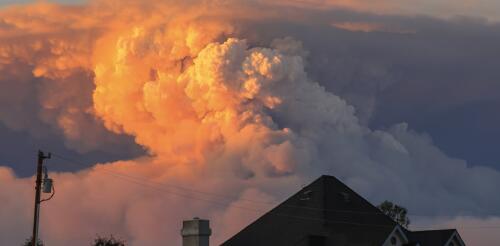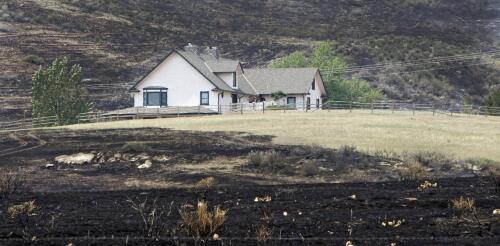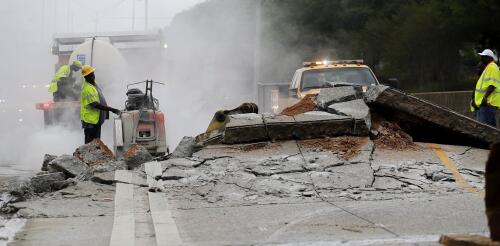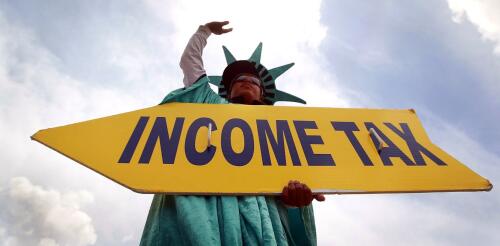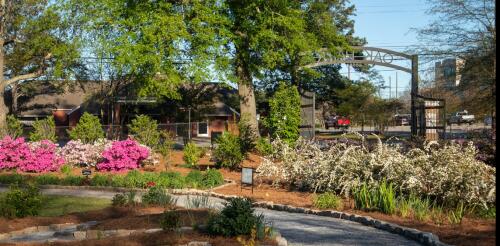environment
Wildfire blowups, fire whirls, towering thunderstorms: When fires get large and hot enough, they can actually create their own weather. In these extreme fire situations, firefighters’ ordinary methods to directly control the fire don’t work, and wildfires burn out of control. Firefighters have seen many of these risks in the enormous Park Fire burning near Chico, California, and other wildfires in summer 2024. But how can a fire create weather? Satellite images show how the Park Fire near Chico, Calif., created intense pyrocumulonimbus plumes, visible in white, in July 2024. CSU/CIRA and NOAA I’m an atmospheric scientist who uses data collected by satellites in weather prediction models to better anticipate extreme fire weather phenomena. Satellite data shows fire-produced thunderstorms are much more common than anyone realized just a few years ago. Here’s what’s happ...
Extreme heat has already made 2024 a busy wildfire year. More acres had burned by mid-July than in all of 2023, and several communities had lost homes to wildfires. As fire season intensifies across the West, there are steps homeowners can take to make their homes less vulnerable to burning and increase the likelihood that firefighters can protect their property in the event of a wildfire. We research wildfire risk to homes and communities. Here’s what decades of research suggest homeowners in high-fire-risk areas can do to protect their properties. This house near Cle Elum, Wash., survived a 2012 wildfire because of the defensible space around the structure, including a lack of trees and brush close to the house, according to state officials. AP Photo/Elaine Thompson Small improvements make big differences A structure’s flammability depends on both the materials that were used to build...
Summer 2024’s record heat is creating problems for transportation infrastructure, from roads to rails. New York’s Third Avenue Bridge, which swings open for ship traffic on the Harlem River, was stuck for hours after its metal expanded in the heat and it couldn’t close. Roads have buckled on hot days in several states, including Washington and Wisconsin. Amtrak warned passengers to prepare for heat-related problems hours before a daylong outage between New York and New Jersey; the risks to power lines and rails during high temperatures are a growing source of delays for the train system. It doesn’t help that the worsening heat is hitting a U.S. infrastructure system that’s already in trouble. The American Society of Civil Engineers gave U.S. infrastructure an overall grade of C- in its latest national Infrastructure Report Card, released in 2021. While there has been some improvement – about 7.5% of U.S. bridges were in poor condition, compar...
Curious Kids is a series for children of all ages. If you have a question you’d like an expert to answer, send it to curiouskidsus@theconversation.com. How can some states get by with no income tax? – Vonnie, age 12, Auburn, Alabama Right before I was born in the 1970s, my family moved to Texas from Nebraska. A big reason was because Texas was – and still is – considered a low-tax state, and my dad wanted to start his business there. Texas is also one of nine states that don’t have an income tax on the “earned income” of people working there. That doesn’t mean Texas doesn’t impose any taxes on its residents – it does. Texans pay other taxes to help pay for schools, hospitals, health care, roads, airports, firefighters, business loans, public safety and all kinds of other public services. For example, Texans pay some of the highest...
Montgomery, Alabama, touts itself as the birthplace of the U.S. Civil Rights Movement. But although Montgomery now embraces its history of bus boycotts and protest marches, it remains one of the most segregated U.S. cities, and still struggles with racial inequality. Today, Montgomery’s population is almost 60% Black. The poverty rate among Black residents is 30.8%, compared to 10.6% among white residents. The city’s infrastructure is deteriorating, and its tax base is shrinking. Cities with histories of segregation tend to suffer more from systemic racism that remains in the veins of their planning laws and policies. As a scholar of urban design and planning, I wanted to know more about how Montgomery’s history affected access to parks and public spaces there. My research explains how the city’s history still influences modern planning and creates unequal access to parks. Racial inequality is deeply embedded in MontgomeryR...
